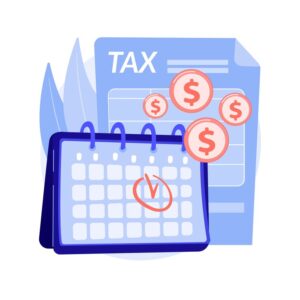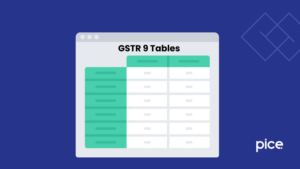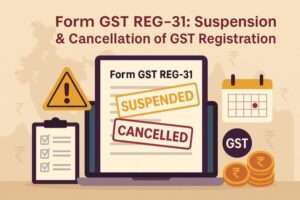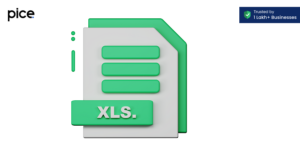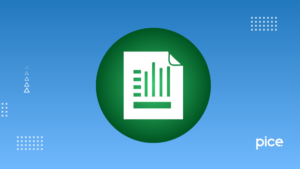Sales Invoice Entry in Tally with GST
- 4 Jul 25
- 13 mins
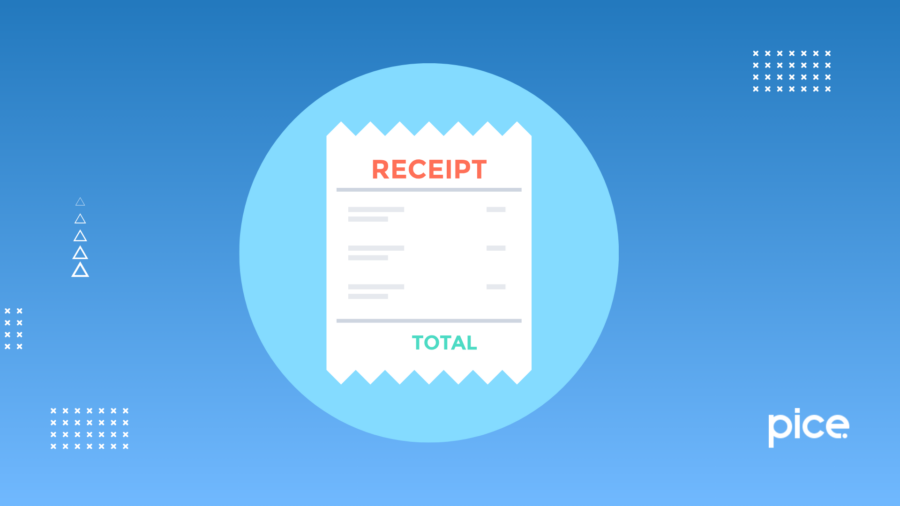
Sales Invoice Entry in Tally with GST
- Sales Entry: Importance and Types
- Why is a Sales Entry Passed?
- Journal Entry for Sales
- Details in a Sales Entry
- Sales Entry with GST
- Format for GST Entry for Intrastate Sale
- What is the Voucher Method in Tally Prime?
- Steps to Pass Sales Entry in Voucher Method in Tally Prime
- What is the Accounting Invoice Method in Tally Prime?
- Steps to Pass Sales Entry in Tally Prime in Accounting Invoice Mode
- What is the Item Invoice Method in Tally Prime?
- Steps to Pass Sales Entry in Tally Prime in Item Invoice Method
- Conclusion
Key Takeaways
- Three Entry Modes: Tally supports Item Invoice, Accounting Invoice, and Voucher methods for different sales scenarios.
- GST Compliance: Proper GST ledger setup (CGST, SGST, IGST) is essential for accurate tax reporting.
- Cash vs. Credit Sales: Journal entries differ—cash uses 'Cash A/c'; credit uses 'Accounts Receivable'.
- Voucher Method Simplicity: Best for non-inventory or bulk sales like services, scrap, or fixed assets.
- Item Invoice for Goods: Ideal for tracking stock items, quantities, rates, and applying GST correctly.
Creating accurate sales entries is crucial for maintaining proper financial records, ensuring compliance, and managing inventory effectively. With the introduction of GST, it is essential for businesses to understand how to incorporate tax details correctly while generating invoices. Tally, one of the most widely used accounting software in India, offers multiple ways to record sales invoices under GST.
This article explores the nitty-gritties of Sales invoice entry in Tally with GST and walks you through different methods of entering sales invoices in Tally. Whether you are a beginner or experienced user, understanding these processes is key to smooth and compliant business operations.
Sales Entry: Importance and Types
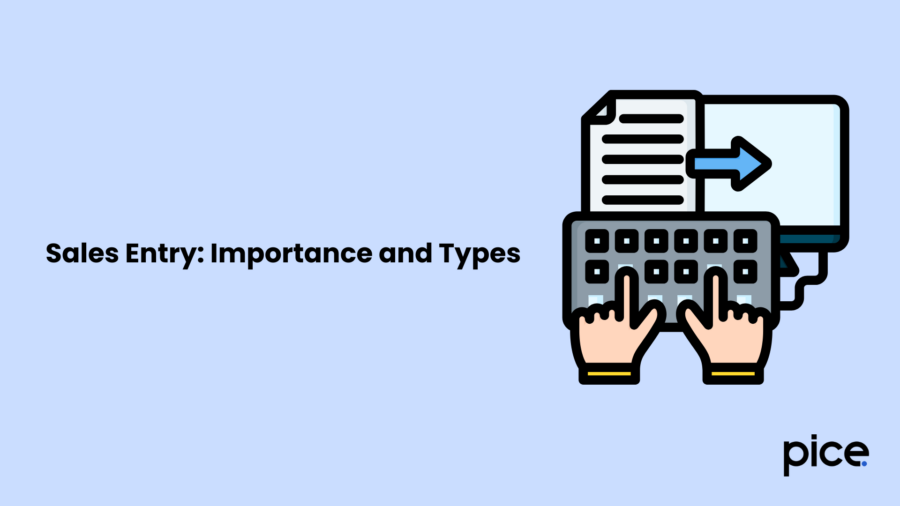
Sales entry is an essential term in accounting. It refers to a transaction recording, which includes information about the transfer of services or goods in exchange for money. This record is made regarding the external entity to whom these services or goods are sold.
Sales entries are managed using business management software. There are three types of sales entry methods, which are as follows:
- Item Invoice Mode: This is the most commonly used record-keeping method. It records item-wise sales along with comprehensive inventory information.
- Accounting Invoice Mode: These entries include information regarding GST but do not have inventory or stock item details.
- Voucher Mode: This mode is usually used to record general sales and provides information such as bulk entries, non-inventory transactions, sales of items not meant for trading, and consumables.
Why is a Sales Entry Passed?
Sales entry is passed for multiple reasons, such as:
- Record Keeping of Revenue: This is done to keep a record of a company's revenue increase through the sale of goods or services.
- Output Tax and GST Compliance: It maintains information regarding the capital a company owes to the government for selling taxable goods and services to ensure effective compliance.
- Management of Inventory: As sales entries have information regarding sold items, they are essential in updating inventory records, making inventory management easier.
Journal Entry for Sales
A sales journal entry keeps a record of the total revenue, which reflects the sale of services or goods by a company. The three events that a journal entry needs to keep are:
- Record of a sale
- Information regarding the reduction in inventory of the item that has been sold to the customer
- Record of a sales tax liability
For cash sales and credit sales, accountants make journal entries in two different ways. They are as follows:
Journal Entry in Cash Sales
The debit part of a journal entry includes sections titled 'cash' and 'cost of goods sold', while the credit part has sections titled 'revenue', 'inventory', and 'Sales tax liability'.
- Businesses debit cash because they receive customer payment at the point of sale.
- The accountant debits the cost of goods sold to record the expense of transferring goods or services to the customer.
- Business credits revenue to recognise income earned from the sale.
- The company credits inventory to reduce the asset, reflecting the decrease in stock due to the sale.
- If applicable, the sale transaction credits sales tax liability for recording the amount owed to the government, which the business will clear when it pays the tax.
Journal Entry in Credit Sales
Here, only one section is different from cash sales -' accounts receivable' replaces 'cash'. The accountant debits accounts receivable to record the amount due from the customer, replacing the cash received in a cash sale scenario.
Details in a Sales Entry

Details that a complete sales entry should generally include are as follows:
- Invoice number
- Date
- Description of the items/ services sold
- Details of Customer
- Rate
- Quantity
- Total Amount
- Goods/ Service Sales Entry
Sales Entry with GST
Sales entry with GST refers to the debit to 'accounts receivable' for the amount same as cash received or invoice. The person's account determines whether the GST account is a credit or debit. For instance, the same GST account will be 'debit' for a seller, which would be 'credit' for the buyer.
Some of the terms to know to understand sales invoice entry in Tally with GST are as follows:
- CGST: Central GST (used for sales within the same state)
- SGST: State GST (used with CGST for intra-state sales)
- IGST: Integrated GST (used for inter-state sales)
- Debtor A/c: Person who owes you money (Customer)
- Creditor A/c: Person you owe money to (Supplier)
- Input Tax Credit (ITC): The tax you paid on purchases that you can claim back
- Output Tax: It is the GST that is collected on sales.
Format for GST Entry for Intrastate Sale
The format for sales entry with GST in case of intrastate sales is as follows:
Customer A/c Dr ___________
To Sales A/c Cr ___________
To CGST Output Tax A/c Cr ___________
To SGST Output Tax A/c Cr ___________
Please note that IGST Output Tax A/c is used instead of CGST Output Tax A/c and SGST Output Tax A/c for interstate sales transactions.
Example of Intra-state Purchase
If company A is located in Maharashtra and it sells goods worth 15000 at a GST rate of 18% to company B in Maharashtra itself, then the entry will be as follows:
Party A/c Dr 15,000
To Sales A/c 17,700
CGST Output Tax A/c Dr 1,350
SGST Output Tax A/c Dr 1,350
What is the Voucher Method in Tally Prime?

A voucher is a document that contains all of the details of a financial transaction and requires you to enter the exact information into the accounts book. By using appropriate vouchers for all transactions, you can update the company's financials by updating or entering the details in the accounting ledgers.
This mode can be used in the following scenarios:
- There is no requirement for detailed item-wise records.
- There is no need for inventory stock management.
- When it is a service sale.
- For scrap sales, bulk sales entries, fixed asset sales, and by-product sales.
There are specific prerequisites to proceed with the voucher method for sales entry in Tally Prime. They are as follows:
- Customer Account/ Bank Account/ Cash Account: Set up customer accounts with GST details and business locations.
- Sales Account Ledger: Prepare a sales account to record income with sub-ledgers.
- GST Output Tax Ledgers: Create ledgers for CGST Output Tax, SGST Output Tax, and IGST Output Tax.
Steps to Pass Sales Entry in Voucher Method in Tally Prime
Simplified steps to pass sales entry in Tally Prime through the voucher method are as follows:
- Launch Tally Prime and go to Gateway of Tally.
- Select Create Vouchers or press V on your keyboard.
- Press F8 to open the Sales Voucher screen.
- Use Ctrl+H to change the mode to 'As Voucher'.
- Enter the invoice number and the date of the transaction.
- Choose the appropriate customer account.
- For cash sales, select Cash or Bank.
- For credit sales, pick the customer's ledger.
- Press Alt+C to create a new ledger if it's not already available.
- Enter the amount to be received in the respective field.
- Press Enter and select the Sales Account to record the sale amount.
- Input the net sales value against the Sales Account.
- Enter again to add applicable tax ledgers like CGST, SGST, or IGST.
- Ensure that each applicable tax is accurate as per the invoice.
- If required, add optional details like delivery terms, reference number, or narration.
- Review all entries for accuracy.
- Press Ctrl+A to save the sales voucher.
What is the Accounting Invoice Method in Tally Prime?
This method is very similar to the voucher method. The primary difference between them is that in the 'accounting invoice method,' you cannot enter the debit and credit entries at the same time. Using this method for a single invoice is ideal.
Two situations where this method can be used include:
- No requirement for maintaining the inventory info.
- Record entries for services provided.
Before beginning with the procedure for sale entries using this method, you will require these ledgers:
- GST Output Tax Ledgers: Create ledgers for CGST Output Tax, SGST Output Tax, and IGST Output Tax.
- Sales Account Ledger: Prepare a sales account to record income with sub-ledgers.
Customer Account/ Bank Account/ Cash Account: Set up customer accounts with GST details and business locations.
Steps to Pass Sales Entry in Tally Prime in Accounting Invoice Mode
Simplified steps to pass sales entry in Tally Prime through the accounting invoice method are as follows:
- Open Tally Prime and go to Gateway of Tally.
- Choose Vouchers or press V to access the voucher screen.
- Press F8 to open the Sales Voucher.
- Use Ctrl+H to switch the mode to 'As Accounting Invoice'.
- Enter the invoice number and transaction date.
- Select the customer ledger to be debited.
- For cash sales, choose Cash or Bank.
- For credit sales, select the customer's ledger.
- If the ledger doesn't exist, press Alt+C to create a new one.
- Press Enter and pick the Sales Account.
- Input the net sales value under the Sales A/c.
- Press Enter again to choose the applicable tax ledgers.
- Select CGST, SGST, or IGST as per the invoice.
- Ensure all amounts match the details in the invoice.
- Verify all fields before saving.
- Press Ctrl+A to save the sales entry.
What is the Item Invoice Method in Tally Prime?
You can use item invoice mode to record the quantity of items, item rate details, and item names.
The only scenario when a person uses this method is:
- To record the sale of goods
There are specific prerequisites to proceed with the item-wise sales entry in Tally Prime. They are as follows:
- Customer Account: Set up customer accounts with GST details and business locations.
- Sales Account: Prepare a sales account to record income. Create sub-ledgers for different sales types, such as local, interstate, and services.
- Define Items: All applicable stock items with HSN codes, tax rates, and units of measurement (UoM).
- Set Up UoM: Create units like pcs, kg, or litres before adding stock items.
- Group Stock Items: Use stock groups to organise items (e.g., consumables, 18% GST items).
Set up GST Output Tax Ledgers: Create ledgers for CGST Output Tax, SGST Output Tax, and IGST Output Tax.
Steps to Pass Sales Entry in Tally Prime in Item Invoice Method
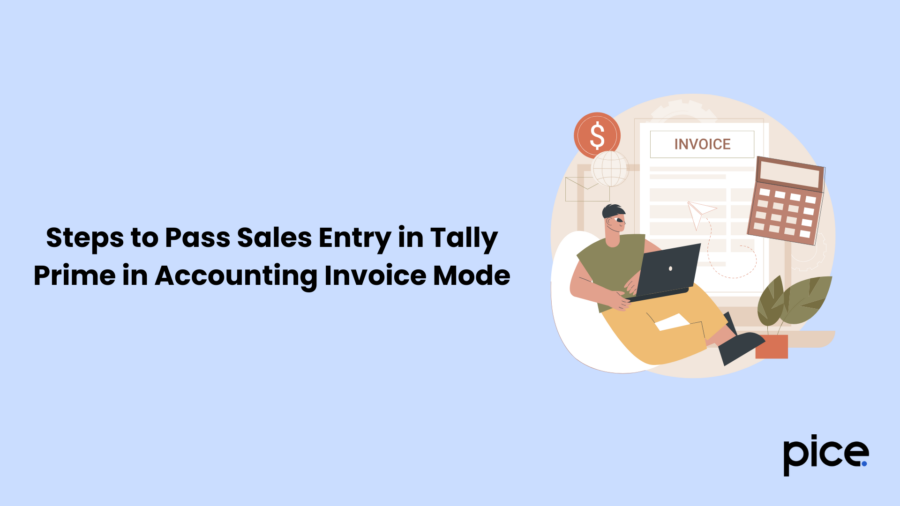
After following the prerequisites, the following are the steps to follow to pass sales entry in Tally Prime through the item invoice method:
- Open Tally Prime, and go to Gateway of Tally.
- Select Vouchers or press V.
- Press F8 to open the Sales Voucher.
- Press Ctrl+H and choose the mode as 'Item Invoice'.
- Enter the invoice number and date.
- Select the customer ledger; choose Cash or Bank for cash sales, or pick the relevant customer ledger for credit sales.
- Enter additional details of the customer, like name, address, and contact information if required.
- Add receipt information such as document number, destination, or bill of lading if needed.
- Choose the sales ledger under Sales Accounts and enter the net sales amount.
- Select the stock items or services sold and press Alt+C to create new items or ledgers if necessary.
- Enter the item details, including quantity and rate; you can manually input the rate if it's not auto-filled.
- If applicable, add any additional ledgers like transport, insurance, or discounts.
- Write narration or remarks if required.
- Press Ctrl+A to save the voucher.
Additional steps to print the GST invoice:
- Press Alt+P and hit Enter on 'Current'.
- Press I to preview the invoice before printing if needed.
- Press F12 to configure the invoice layout.
- Press P to print the final invoice.
Conclusion
Journal entries for sales transactions offer valuable insights into a company's financial health, tracking revenue, inventory movement, and tax implications. In Tally, there are three main approaches to record sales: the item invoice method, accounting invoice method, and voucher method, each suited to different business needs.
Recording sales invoices with GST in Tally requires a solid understanding of GST regulations and the software's features. Without this knowledge, errors in tax calculation or reporting may occur. By mastering these methods and prerequisites, businesses can ensure accurate bookkeeping, maintain compliance with GST laws, and make informed financial decisions based on reliable data.
💡If you want to streamline your invoices and make payments via credit or debit card or UPI, consider using the PICE App. Explore the PICE App today and take your business to new heights.
 By
By 






